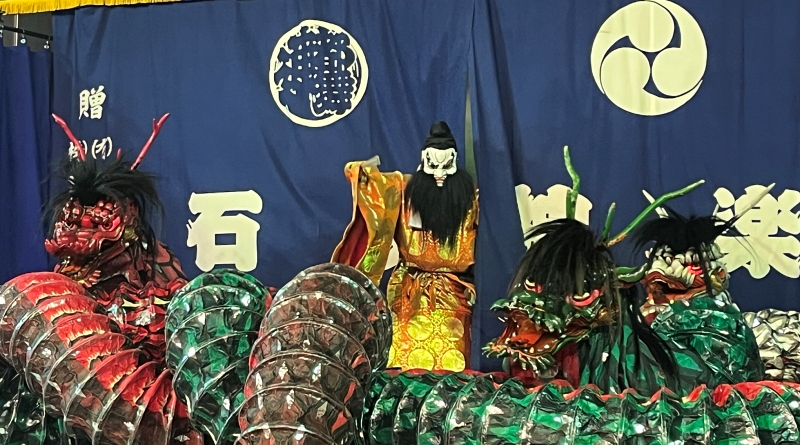Oh Gods! Susano-o and Yamata no Orochi
One of the most epic myths in the Kojiki is the Legend of Yamata no Orochi. The climax of this myth is the battle between Susano-o and the fearsome eight headed dragon, Yamata no Orochi. This is a very popular Japanese myth, with re-adaptations in many forms such as kabuki, dance, song, etc. Apart from being a very exciting story, it is also a very fundamental part of Japanese mythology. This story introduces the Kusanagi no ken, a legendary sword that is one of the emperor’s Imperial Regalia and creates Izumo, a place that later serves as the very beginnings of Japanese civilization. The myth begins immediately after the end of events of Ama no Iwato, so be sure to read that first if you haven’t.
Also, you can find our version of the Creation of Japan with Izanami and Izanagi here.
The Legend of Susano-o and Yamata no Orochi
Banishment
There was great joy that Light shone again over the world, now that Amaterasu was no longer in hidding. For Susano-o, however, things were not so good. Since his actions were the cause of the world having been cast in darkness, Susano-o needed to be punished. The gods plucked out his beard, ripped off his fingernails and literally tossed him off the High Plane.
He landed in the Reed Kingdom and wandered the land for a time, allowing his nails and hair to grow back. Since Izanami and Izanagi created the land of the Reed Kingdom, the Earthly Gods began to reside in it. At this point in the Kojiki, humans do exist, but all roles are driven by gods and not man. The only beings mentioned at this time are all gods of some sort.
Princess Kushinada
Then one day he found a chopstick floating in a river and decided to follow the river upstream to see who lived nearby. He came across a village and heard the sound of sobbing. An old couple was weeping with a young woman. Susano-o was awestruck by the young woman’s beauty, and in an unusual act of empathy, inquired as to why they were all so sad. The old couple explained that this was their daughter Princess Kushinada [櫛名田比売]. and that an enormous, vicious, eight-headed dragon, called Yamata no Orochi [八俣遠呂智], had been ravishing the lands.
『そが目は赤かがちの如くにして身一つに八つの頭八つの尾あり。またその身に蘿また檜椙生ひ、その長は谷八谷峡八尾に渡りて見ゆ。その腹は、悉に常に血たり爛れたり。』
“[The dragon’s] eyes are as red as hozuki, with eight heads and eight tails. Its body is covered with moss, cypress and oak trees and stretches the length of eight mountains and valleys. Its belly always bleeds and festers.
-Kojiki, Yamata no Orochi
Every year the only way to assuage the beast was for the couple to sacrifice one of their daughters to the dragon. They had already been forced to part with seven of their daughters, and Kushinada was their last child. Proudly, Susano-o exclaimed that he would gladly slay Yamata no Orochi in exchange for the hand of Princess Kushinada, to which her parents agreed.
Preparing for Battle
Susano-o and Kushinada’s parents quickly devised a plan to defeat the dragon. Susano-o built a long fence with eight gates. Meanwhile, the old couple brewed a very large and very potent batch of sake. Once the sake was complete, Susano-o turned his attention to Kushinada. The Kojiki explains here, that an important rite of marriage at this time was for a wife to make her husband a comb. It goes on to say that Susano-o turned Kushinada into a comb and placed it in his hair. This language could be literal, but it is also suggestive enough to mean that instead Kushinada diligently made him a comb. Either way, properly adorned with the spirit of his beloved, Susano-o went off to face the dragon.

The Battle of Yamata no Orochi and Susano-o
Susano-o placed one pot of sake in each of the gates and made himself inconspicuous in the bushes. Dragons are often great wise creatures, not easily tricked by some ridiculous carrot-and-stick trap. This dragon we will assume, had too many things going on in its eight heads and oddly thought nothing at all strange or dangerous of these conveniently placed pots of sake. Happily, Yamata no Orochi gulped down each pot sake. Blissfully buzzed, the dragon curled up and went to sleep.
Susano-o gave a smirk; the plan had worked. Susano-o unsheathed his sword, sprung from his hiding place and began to hack off each of the inebriated dragon’s eight heads. While hacking away at the dragon’s tail, his sword hit something hard. Perplexed, Susano-o reached into the wound and pulled out—a sword! This was the Kusanagi-no-ken, the holy sword of Japanese mythology, equal in importance as Excalibur is in Western legends.

Victoriously, Susano-o returned with Kusanagi-no-ken, and he and Kushinada were soon properly wed. Shortly thereafter, Susano-o offered Kusanagi-no-ken to Amaterasu in repentance for his actions in the High Plane. She accepted it, but Susano-o decided to stay with his new wife in the land that would one day be called Izumo.

Leave a Reply